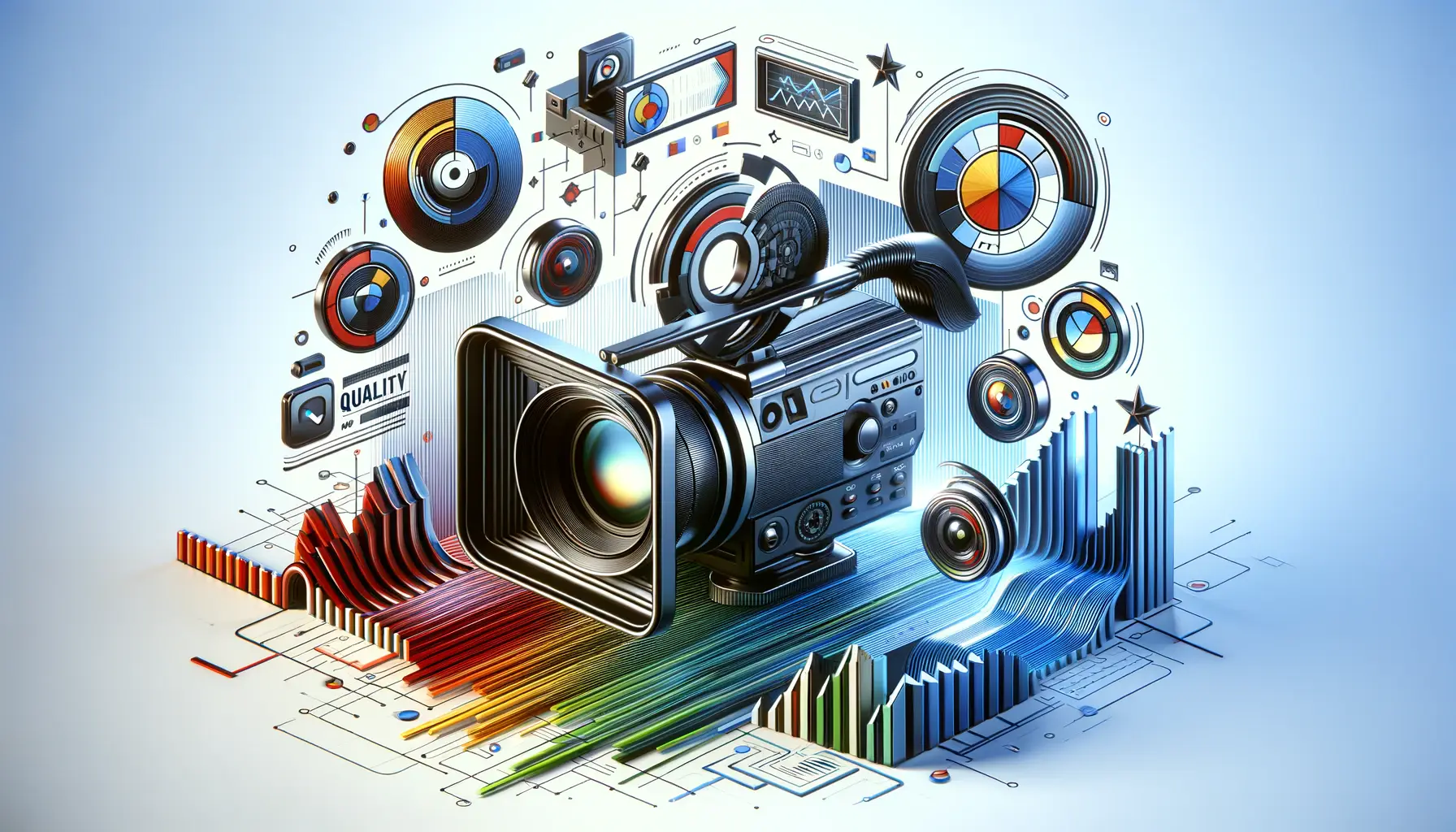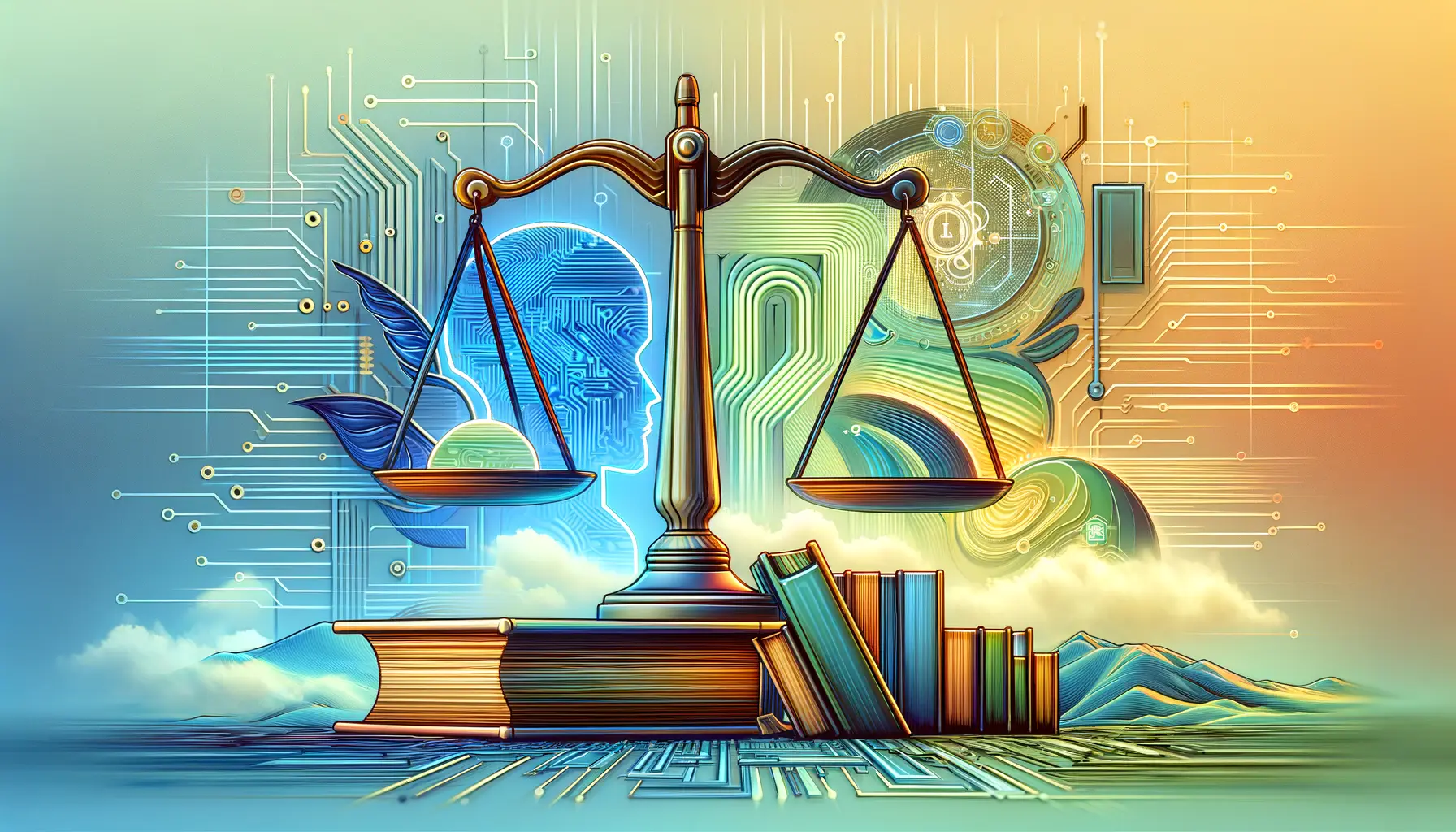The intersection of artificial intelligence and search engine optimization (SEO) is rapidly transforming the digital landscape, particularly in the realm of video content creation.
OpenAI’s Sora, a groundbreaking AI model, is at the forefront of this revolution, offering unprecedented capabilities in generating photorealistic videos from textual prompts.
This innovation not only heralds a new era for content creators but also poses unique challenges and opportunities for SEO strategies.
SEO, traditionally focused on text-based content, is evolving to accommodate the surge in AI-generated video content.
The integration of Sora into content creation workflows necessitates a reevaluation of SEO practices to ensure these AI-generated videos reach their intended audience.
This article delves into the nuances of optimizing Sora-generated videos for search engines, highlighting the synergy between AI’s creative potential and SEO’s tactical precision to maximize online visibility and engagement.
- Understanding Sora and Its Impact on Video Content Creation
- Key SEO Strategies for AI-Generated Videos
- Enhancing User Engagement Through SEO
- Integrating Social Media to Amplify Video Reach
- Monitoring and Analyzing SEO Performance
- Future Trends in AI-Generated Video SEO
- Strategic Content Planning for AI-Generated Videos
- Conclusion: Navigating the Future of SEO with AI-Generated Video Content
- SEO Optimization for AI-Generated Videos FAQs
Understanding Sora and Its Impact on Video Content Creation
The Advent of Sora in AI Video Generation
The introduction of Sora by OpenAI marks a significant milestone in the field of artificial intelligence.
This advanced model is capable of transforming written prompts into high-quality, photorealistic videos, thereby democratizing video production.
The implications for content creators are profound, as Sora enables the rapid creation of videos that would otherwise require extensive resources and time.
This leap in technology is not just a boon for efficiency but also opens up new avenues for creativity and storytelling.
As Sora lowers the barriers to video production, the volume of video content on the internet is poised to increase dramatically.
This surge underscores the need for effective SEO strategies tailored to AI-generated content.
Ensuring these videos are discoverable by search engines becomes paramount, as visibility in search results directly correlates with audience reach and engagement.
SEO Challenges and Opportunities with AI-Generated Videos
The rise of AI-generated videos introduces specific challenges for SEO practitioners.
Traditional SEO techniques, heavily reliant on text analysis, must adapt to content that is primarily visual and auditory.
The task then becomes how to make such content comprehensible and indexable by search engines, which have historically favored text-based information.
This challenge invites innovation in SEO practices, including the optimization of video titles, descriptions, and metadata, as well as the integration of AI-generated transcripts and captions.
However, these challenges are accompanied by significant opportunities.
AI-generated videos, such as those created by Sora, can be optimized for search in ways that were previously impractical or too resource-intensive for regular video content.
For instance, the ability to generate videos tailored to specific keywords or topics on demand allows for a more strategic approach to content creation.
This adaptability not only enhances SEO efforts but also ensures that the content is highly relevant and engaging for the target audience.
Optimizing AI-generated videos requires a blend of traditional SEO tactics and innovative strategies to address the unique characteristics of visual content.
Key SEO Strategies for AI-Generated Videos
Optimizing AI-generated videos for search engines involves a multifaceted approach that extends beyond traditional text optimization.
The unique nature of video content, especially when generated by AI models like Sora, requires a tailored SEO strategy.
This strategy encompasses various elements, from metadata optimization to leveraging video sitemaps, each playing a crucial role in enhancing the visibility and searchability of AI-generated videos.
Metadata Optimization for Enhanced Discoverability
Metadata, including titles, descriptions, and tags, serves as a critical component for SEO.
For AI-generated videos, it’s essential to craft metadata that is not only keyword-rich but also accurately reflects the video content.
This ensures that search engines can understand and index the videos effectively, thereby improving their visibility in search results.
- Title Optimization: Incorporate relevant keywords while making the title engaging and descriptive of the video content.
- Description Enhancement: Use the description field to provide a detailed overview of the video, including primary and secondary keywords.
- Tagging with Precision: Tags can help categorize the content, making it easier for search engines to discern the video’s topic and relevance.
Transcripts and Captions for Accessibility and Indexing
Transcripts and captions not only make videos accessible to a broader audience, including those with hearing impairments, but they also provide search engines with valuable text to crawl.
This text can significantly enhance the SEO of AI-generated videos by incorporating keywords and relevant content that search engines can index.
- Transcripts: Offer a full textual representation of the video content, including spoken words and non-verbal elements.
- Captions: Provide synchronized text of the spoken words, which can improve user engagement and video comprehension.
Utilizing Video Sitemaps for Better Indexing
Video sitemaps are an essential tool for informing search engines about the video content on your site.
They allow you to provide specific details about each video, such as the title, description, play page URL, and thumbnail URL.
This information can significantly aid in the indexing process, ensuring that your AI-generated videos are accurately represented in search results.
Implementing these SEO strategies effectively can significantly impact the visibility of AI-generated videos.
By focusing on metadata optimization, incorporating transcripts and captions, and utilizing video sitemaps, content creators can ensure their Sora-generated videos are not only seen but also engage the intended audience.
Incorporating SEO best practices from the outset of video creation can streamline the optimization process, making AI-generated content more discoverable and impactful.
Enhancing User Engagement Through SEO
While technical SEO strategies are crucial for ensuring AI-generated videos are discoverable, enhancing user engagement is equally important for sustaining interest and encouraging interaction.
Engagement metrics such as watch time, click-through rate (CTR), and user interaction play a significant role in how search engines evaluate and rank video content.
Therefore, optimizing AI-generated videos for user engagement is a key aspect of a comprehensive SEO strategy.
Engagement begins with the first impression, often determined by the video thumbnail and title.
A compelling thumbnail and an intriguing title can significantly increase the likelihood of a user clicking on the video.
Once a viewer has clicked, the video content itself must deliver on the promise of the title and thumbnail to keep the viewer watching.
Creating Compelling Thumbnails and Titles
- Thumbnail Design: Use high-quality, visually appealing images that accurately represent the video content. Including elements such as expressive faces or relevant objects can attract attention.
- Title Crafting: Titles should be clear, engaging, and include keywords naturally. They should promise value or entertainment that the video delivers.
Optimizing Video Content for Viewer Retention
- Content Quality: Ensure the video provides valuable information, entertainment, or both. High-quality content encourages viewers to watch more and engage with the video.
- Storytelling and Pacing: Use storytelling techniques to keep the viewer interested. Proper pacing is crucial to maintain engagement without dragging or overwhelming the viewer.
Leveraging Interactive Video Features
Interactive features such as in-video links, polls, and call-to-action (CTA) buttons can significantly enhance user engagement.
These features encourage viewers to interact with the content, potentially increasing watch time and providing valuable feedback.
By focusing on these aspects of user engagement, SEO strategies for AI-generated videos can go beyond mere discoverability to foster a loyal and active viewership.
This not only benefits search engine rankings but also contributes to the overall success of the video content.
True engagement stems from delivering value and an enjoyable viewing experience, which in turn, positively impacts SEO performance.
Integrating Social Media to Amplify Video Reach
In today’s digital landscape, social media platforms play a pivotal role in the dissemination and promotion of video content.
For AI-generated videos, leveraging social media can significantly amplify reach and engagement, creating additional signals that search engines may consider for ranking purposes.
The strategic integration of social media into your SEO plan can extend the visibility of your videos beyond traditional search engine results, tapping into vast networks of potential viewers.
Sharing AI-generated videos on social media not only increases exposure but also encourages shares, likes, and comments, which can indirectly influence SEO.
These social signals, while not direct ranking factors, contribute to the overall online presence and can lead to higher search visibility through increased brand recognition and backlinks.
Choosing the Right Platforms for Your Content
- Platform Relevance: Select social media platforms that align with your target audience’s preferences. For instance, LinkedIn may be more suitable for professional and business-oriented videos, while Instagram and TikTok cater to more visual and entertainment-focused content.
- Content Adaptation: Tailor your videos and accompanying posts to fit the norms and expectations of each platform. This may involve editing videos to match platform-specific aspect ratios or durations.
Engaging with Your Audience on Social Media
- Active Participation: Respond to comments, participate in relevant conversations, and encourage user interaction to build a community around your content.
- User-Generated Content: Encourage viewers to create their own content related to your videos, such as reactions or discussions, which can further increase visibility and engagement.
Utilizing Hashtags and Social Media SEO
Hashtags and keywords play a crucial role in making your content discoverable within social media platforms.
Research and use relevant hashtags to increase the chances of your videos being found by users interested in related topics.
Additionally, optimizing your social media profiles and posts with keywords can enhance their visibility in search results, both on social media and search engines.
Integrating social media into the SEO strategy for AI-generated videos not only broadens the reach of your content but also fosters engagement and community building.
This holistic approach ensures that your videos gain maximum visibility and impact across the digital ecosystem.
Social media is a powerful amplifier for video content, creating opportunities for engagement and visibility that complement traditional SEO efforts.
Monitoring and Analyzing SEO Performance
To ensure the effectiveness of SEO strategies for AI-generated videos, continuous monitoring and analysis of performance metrics are essential.
This process involves tracking various indicators of success, such as search rankings, traffic sources, and engagement metrics.
By analyzing these data points, content creators can gain insights into the performance of their videos and identify areas for improvement.
Utilizing analytics tools and platforms provides a comprehensive view of how videos are performing in search engines and on social media.
These tools can offer detailed reports on viewer behavior, including how viewers find your videos, how long they watch them, and how they interact with your content.
This information is invaluable for refining SEO strategies and making informed decisions to enhance video visibility and engagement.
Key Metrics to Track for SEO Success
- Search Rankings: Monitor where your videos appear in search engine results for targeted keywords. Improvements in rankings can indicate successful SEO optimization.
- Traffic Sources: Analyze where your viewers are coming from, whether it’s direct searches, social media referrals, or other websites. This helps in understanding the effectiveness of your distribution channels.
- Engagement Metrics: Track metrics such as watch time, likes, comments, and shares to gauge viewer engagement and interest in your content.
Adjusting Strategies Based on Analytics Insights
Armed with data from analytics, content creators can make strategic adjustments to their SEO and content strategies.
For example, if certain videos perform well from social media referrals, it may be beneficial to increase social media activity or explore paid social media advertising.
Conversely, if videos are not ranking well for desired keywords, revisiting keyword optimization and metadata may be necessary.
Regularly reviewing and adjusting your SEO strategy based on performance analytics ensures that your AI-generated videos continue to reach and engage your target audience effectively.
This iterative process allows for continuous improvement, adapting to changes in search engine algorithms and viewer preferences.
Regular analysis of SEO performance is crucial for optimizing AI-generated video content and ensuring it meets its intended audience effectively.
Future Trends in AI-Generated Video SEO
The landscape of SEO for AI-generated videos is continually evolving, driven by advancements in technology and changes in user behavior.
As AI models like Sora become more sophisticated and integrated into content creation processes, the strategies for optimizing these videos for search engines will also need to adapt.
Anticipating future trends in AI-generated video SEO can help content creators stay ahead of the curve, ensuring their content remains relevant and visible in an increasingly competitive digital environment.
One significant trend is the increasing importance of voice search and natural language processing (NLP) in SEO.
As more users turn to voice assistants for internet searches, optimizing AI-generated videos for voice search will become crucial.
This involves focusing on conversational keywords and questions that users are likely to ask, making video content more accessible through voice queries.
Advancements in AI and Machine Learning
- Improved Content Personalization: Future AI developments are expected to offer enhanced content personalization, tailoring video recommendations to individual user preferences and search histories.
- Automated SEO Optimization: AI could automate many aspects of SEO, from keyword research to metadata optimization, streamlining the process for content creators.
Interactive and Immersive Video Experiences
- Augmented Reality (AR) and Virtual Reality (VR): The integration of AR and VR into AI-generated videos could offer new opportunities for engagement, making content more interactive and immersive.
- Interactive Storytelling: Enhanced interactivity, allowing viewers to influence the narrative or explore additional content paths, could significantly impact engagement and SEO.
Increased Focus on User Experience (UX)
As search engines become more sophisticated in evaluating content quality, the user experience of AI-generated videos will play a more significant role in SEO.
This includes factors such as video loading speed, mobile optimization, and the overall design of the viewing platform.
Ensuring a seamless and enjoyable user experience will be key to achieving and maintaining high search rankings.
By staying informed about these and other emerging trends, content creators can adapt their SEO strategies to maintain the effectiveness and visibility of their AI-generated videos.
The future of video SEO is dynamic and promising, with continuous innovations offering new ways to engage audiences and optimize content for search engines.
Embracing future trends in AI-generated video SEO is essential for content creators aiming to leverage the full potential of their video content in the digital age.
Strategic Content Planning for AI-Generated Videos
At the core of successful SEO for AI-generated videos is strategic content planning.
This involves not just the optimization of individual videos but also considering how each piece fits into a broader content strategy.
For videos generated by AI technologies like Sora, it’s essential to align content with audience needs, search trends, and SEO best practices to maximize impact and visibility.
Strategic planning requires a deep understanding of your target audience, including their preferences, pain points, and search behaviors.
This knowledge enables the creation of AI-generated videos that are not only relevant and engaging but also optimized for search engines from the outset.
Incorporating SEO considerations into the content planning process ensures that videos are designed with discoverability in mind, addressing the right topics, keywords, and formats that resonate with your audience and search engines alike.
Identifying Audience Needs and Search Trends
- Audience Research: Conduct surveys, analyze social media interactions, and review analytics to understand what your audience is interested in and how they consume content.
- Search Trend Analysis: Use tools like Google Trends and keyword research platforms to identify emerging topics and keywords relevant to your audience.
Aligning Videos with SEO and Content Goals
- Goal Setting: Define clear objectives for your AI-generated video content, such as increasing brand awareness, driving website traffic, or enhancing user engagement.
- SEO Integration: Ensure that each video is optimized for SEO, incorporating targeted keywords, engaging titles and descriptions, and structured data where applicable.
Creating a Content Calendar
Organizing your AI-generated video content into a content calendar is crucial for maintaining a consistent publishing schedule.
This helps in building audience anticipation and engagement, as well as providing regular content for search engines to index.
A content calendar also allows for strategic timing of video releases to coincide with peak search periods or important dates related to your content themes.
Strategic content planning for AI-generated videos is a dynamic process that adapts to changing audience needs and search engine algorithms.
By focusing on audience research, aligning videos with SEO goals, and maintaining a structured content calendar, content creators can ensure their AI-generated videos achieve maximum reach and impact.
Assuming that AI-generated content does not require strategic planning is a misconception that can limit the potential of your video content in search rankings and audience engagement.
Conclusion: Navigating the Future of SEO with AI-Generated Video Content
The integration of AI-generated video content, exemplified by OpenAI’s Sora, into the digital marketing landscape represents a significant shift in how content is created, optimized, and consumed.
As we have explored, the synergy between AI-generated videos and SEO strategies offers a wealth of opportunities for content creators to enhance visibility, engage audiences, and drive meaningful interactions online.
The evolution of SEO in response to the rise of AI-generated content underscores the importance of adaptability and strategic planning in achieving digital marketing success.
Embracing Innovation and Adaptability
The rapid advancements in AI technology and its application in video content creation demand a proactive approach to SEO.
Content creators must embrace innovation, continually adapting their strategies to leverage the unique capabilities of AI-generated videos.
This includes optimizing metadata, utilizing transcripts and captions for better indexing, and ensuring videos are designed with both search engines and user engagement in mind.
The future of SEO in the realm of AI-generated video content is dynamic, with ongoing changes in search engine algorithms and user behavior patterns necessitating a flexible and forward-thinking approach.
Strategic Planning and Continuous Optimization
Success in optimizing AI-generated videos for search engines goes beyond technical SEO tactics.
It requires a comprehensive strategy that encompasses understanding audience needs, aligning content with SEO and business goals, and employing analytics to refine and adjust approaches.
The strategic planning and continuous optimization of AI-generated video content are critical for staying ahead in a competitive digital environment.
By focusing on these areas, content creators can ensure their videos not only achieve high visibility but also resonate with and engage their target audiences.
Looking Ahead: The Convergence of AI and SEO
The convergence of AI and SEO opens up new horizons for content creation and optimization.
As AI technologies like Sora continue to evolve, so too will the strategies for optimizing AI-generated video content.
The future promises more personalized, interactive, and immersive video experiences, further blurring the lines between content creation and optimization.
For SEO professionals and content creators, the challenge will be to harness these advancements, ensuring that AI-generated videos not only reach their intended audience but also offer value, engagement, and a memorable user experience.
In conclusion, the optimization of AI-generated videos for search engines is a multifaceted endeavor that extends beyond traditional SEO practices.
It encompasses a deep understanding of technology, audience behavior, and strategic content planning.
As we navigate the future of SEO with AI-generated video content, the key to success lies in our ability to innovate, adapt, and strategically plan.
By doing so, we can unlock the full potential of AI-generated videos, ensuring they play a pivotal role in our digital marketing strategies and continue to captivate and engage audiences worldwide.
SEO Optimization for AI-Generated Videos FAQs
Explore common questions about enhancing the searchability and visibility of AI-generated video content.
AI significantly enhances SEO video marketing by automating keyword research, optimizing metadata, and improving content personalization for targeted audience engagement.
Google states AI-generated content won’t inherently impact search rankings if it provides value, relevance, and meets SEO best practices.
As AI-generated content becomes prevalent, adapting SEO best practices to include AI’s capabilities in content creation and optimization is crucial.
Creating SEO-friendly AI content involves focusing on quality, relevance, and user engagement, along with traditional SEO tactics like keyword optimization.
Google encourages creators to focus on quality and relevance, stating that AI-generated content should adhere to the same standards as traditional content for search success.
Optimize AI-generated videos for voice search by incorporating conversational keywords and questions likely to be used in voice queries.
Transcripts enhance SEO by providing text for search engines to index, making AI-generated videos more accessible and discoverable.
While not direct ranking factors, social media signals from AI-generated videos can enhance online presence and indirectly improve SEO through increased visibility and backlinks.












